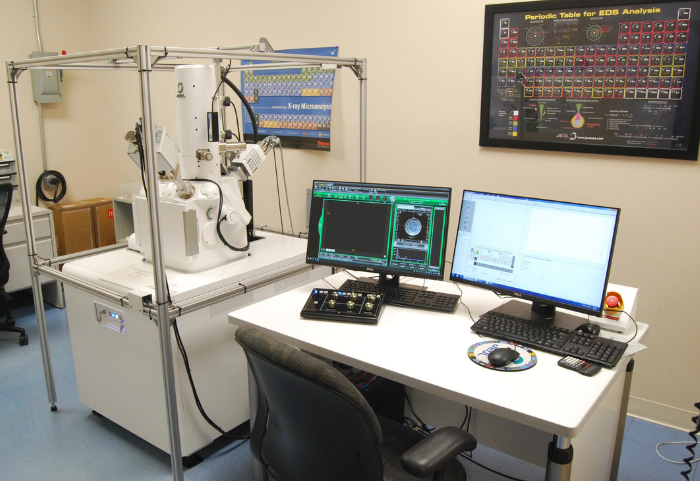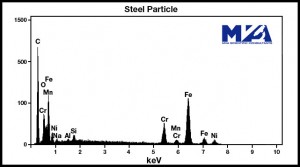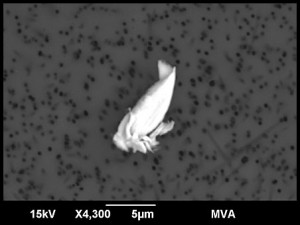Expand Your Knowledge
Our resource center archives our case studies, published articles, blogs, webinars, and image galleries. Discover ways microscopy has made a meaningful impact.

Energy dispersive x-ray spectrometry (EDS or EDX), sometimes called energy dispersive x-ray analysis (EDXA), is a microanalysis technique used to determine the composition of a sample.
EDS is considered a non-destructive analytical technique, and it is effective for major and minor element analysis. The ability to characterize and identify small particles and other materials in the electron microscope is greatly enhanced by the common addition of EDS capability.
In either a scanning electron microscope (SEM) or a transmission electron microscope (TEM), the bombardment by the energetic electron beam induces the emission of x-rays at energies which are characteristic of the elements present in the sample. These x-rays are collected by an EDS detector, sorted and counted, and the result can be presented as an EDS spectrum (Figure 1) or histogram. EDS can also produce an elemental map, which is an image of an area on a sample that shows the elements present and their concentrations.
The EDS spectrum below presents the number of x-rays versus x-ray energy. The presence of peaks indicates the presence of the associated elements. The height of the peaks can be related to the concentration of the elements, so semi-quantitative elemental analysis is possible. The detection limit of EDS analysis in the SEM depends on the composition of the sample being analyzed. In the micrograph below (Figure 2), it identifies an unknown particle as stainless steel, allowing its source in the processing stream to be identified.

Figure 1: EDS Spectrum of Steel Particle

Figure 2: Scanning Electron Micrograph of Steel Particle
If you are interested in material or particle identification using SEM-EDS or TEM-EDS, please contact us at info@mvainc.com or 770-662-8509.